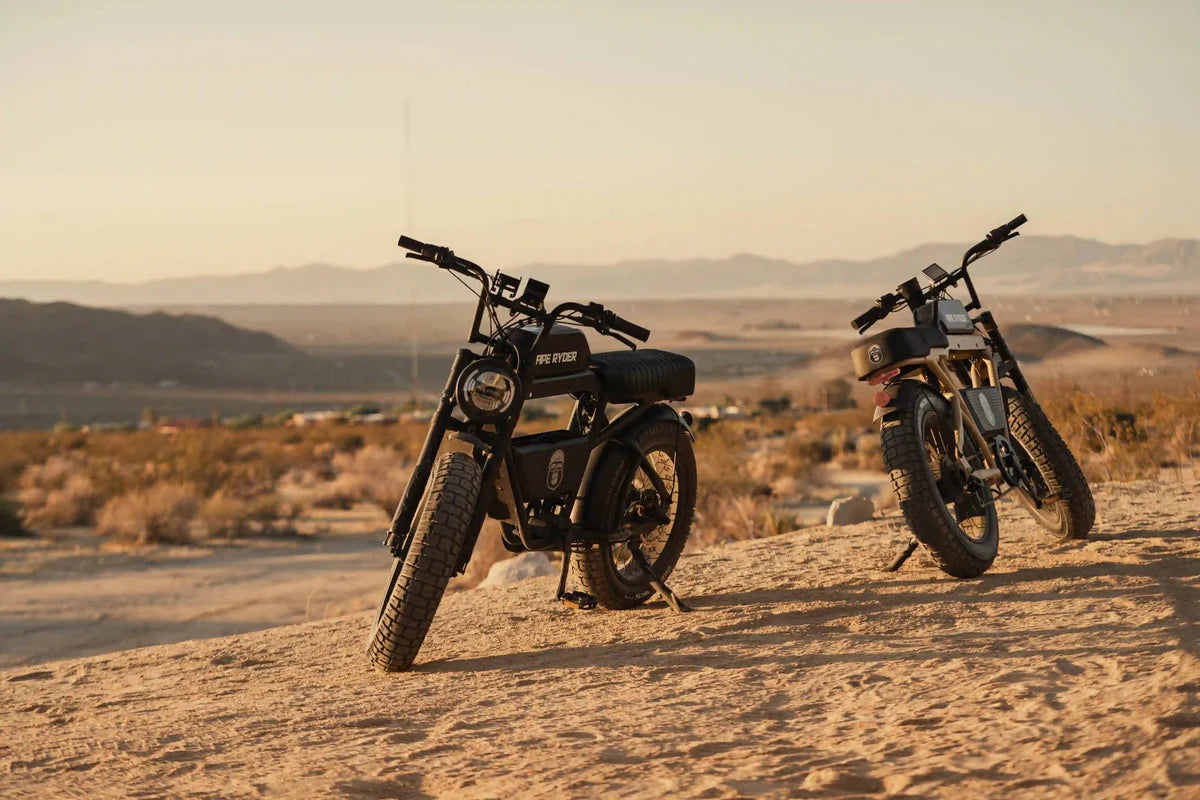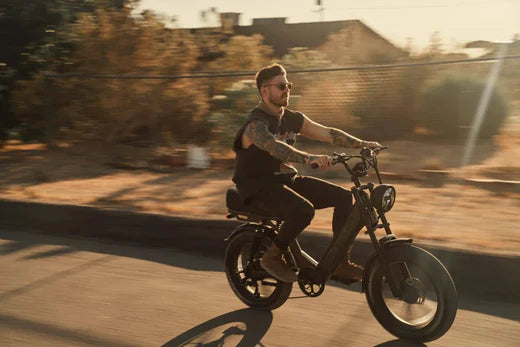Electric bikes or e-bikes find their place in the market and sweep it very fast because they can wed the conventional riding experience with motor-assisted pedaling. The most frequent question that would-be riders ask is: "How fast do electric bikes go?" The speed an e-bike will achieve again depends on a few factors, which include motor power and pedal assist, and usually is capped according to local regulations. Now, let's get into the different factors that will affect how fast an electric bike will go and what might be expected in models like ApeRyder's.
Don't forget to check out all our e-bike collection at the end!
The Appeal of Electric Bikes
The actual value of such growing interest in e-bikes is the fact that they are greener and more sustainable in travel, hugely retrench commuting time, and open up completely new categories for cycling. E-bikes are designed to offer something that improves convenience and pleasure many times over: for the eco-concerned commuter or for the lover of outdoors, it is an area of interest.
Understanding E-Bike Speeds
E-bike speeds can be quite exciting. Most of the e-bikes cover a speed of between 20 to 28 mph, depending on their class designation and a little pedaling from the rider. Doing so places them as a potential commuter vehicle for riders who often need to get off to some destination pretty fast while staying sweat-free, mainly if one navigates urban environments with notorious traffic.
Factors Influencing E-Bike Speed
E-bike speeds can be quite exciting. Most of the e-bikes cover a speed of between 20 to 28 mph, depending on their class designation and a little pedaling from the rider. Doing so places them as a potential commuter vehicle for riders who often need to get off to some destination pretty fast while staying sweat-free, mainly if one navigates urban environments with notorious traffic.
Types of E-Bikes and Their Speed Limits
The velocity in e-bikes depends on many factors. These are motor power, weight of the bike and nature of the terrain one is riding on. A strong motor will propel an e-bike at high speeds while a light bike is easy to accelerate. The weight of the rider and his pedaling effort are very vital in attaining speed. It will also ride more slowly when one is pedaling uphill or across rough landscape whereas the smooth, even surface provides the highest possible speed.
Legal Regulations and Speed Limits
Knowing the legal restrictions on e-bikes is an integral part of riding both safely and legally. There are country-specific and state-specific laws regulating the speeds at which e-bikes are legal and where they may be ridden. For instance, class 3 e-bikes are generally not legal to use on multi-use paths in the U.S., which affects riders' decisions about where to travel.
E-Bike Regulations in the U.S.
E-bike regulations differ widely from state to state within the United States, so for the most part, each state determines its regulations. However, federal law specifies a top speed of 20 mph for an e-bike using only motor power. States might specify where e-bikes are allowed to be ridden: along bike paths, in the streets, or in the dirt of trails, and further, states might impose additional specifications for the speed that is deemed safe.
E-Bike Regulations in Europe
Europe, on the other hand, is more regulated. The European Union regulates e-bikes to travel at 15.5 mph for pedal-assist e-bikes, with riders adhering to a specific equipment standard and safety regulations of these bikes to ensure the safety of both public and private usage. This also covers lights, reflectors, and in some countries, registration.
Navigating Local Laws
Always check for local regulations before riding your e-bike, as cities and municipalities may further set their rules on using e-bikes and their respective speed limits, especially in parks and shared spaces. Knowing this would secure a fun and safe riding experience without getting fined or penalized in any way.
Comparing E-Bike Speeds to Traditional Bikes
How do e-bike speeds stack up next to conventional bikes? While professional riders are capable of quite high top-end speeds, the average commuter on a traditional bike normally stays between 12 and 18 miles per hour. E-bikes provide fast, less tiring transit options that appeal to many riders, including those who may be intimidated by conventional cycling's demands.
Speed Versatility
One of the great advantages associated with e-bikes is the versatility in speed they provide. Riders may turn on the motor to increase speed to get to work more quickly and pleasantly or ride manually to exercise and be leisurely; this will provide a much more flexible mode of transportation that can help answer different needs and fitness levels.
E-Bikes in Urban Settings
E-bikes can dramatically cut commuting time in urban environments. With the ability to reach speeds of 28 mph, many e-bike riders are going to find themselves able to stay right with city traffic, thus making them very practical for day-to-day commutes. This means less congestion and more fun.
Long-Distance Travel
Among the greatest advantages of e-bikes during long-distance travel is that it can offer a constant speed, which makes long rides so much easier and feasible. With the motor assistance keeping one's pace steady, fighting fatigue, this makes the ride longer. This may turn out to be quite useful in Sunday rides or other rides that are long enough where endurance becomes a task.
The Role of Battery Life in Speed
This means that battery life plays a huge role in maintaining e-bike speeds. A high-capacity battery is able to sustain speeds of higher miles per hour over a longer distance, while a depleted battery will dramatically limit performance. In considering this factor, one should, therefore, take into regard the battery capacity and range on an e-bike since this has a direct bearing on their ride experience.
Battery Capacity and Range
Most batteries have their capacity rated in watt-hours (Wh). Over 500 Wh, batteries now lead to a longer-distance range, which can also be sustained at higher speeds, and hence recommended for longer commutes. A rider should acquire a battery that he will need for the commute or the distance he usually covers so that he will not find himself stranded with no power in the middle of nowhere.
Optimizing Battery Usage
Pedal-assist can be engaged, instead of the throttle, at any time to extend the battery life. This works out to conserve the power of the battery and thereby extend the range of the bike while also building up a culture for physical activity. Moreover, this helps in preserving middle-speed battery life in order to cover a distance without recharging.
Charging and Maintenance
For your e-bike to function optimally, regular recharging is not only advisable but proper maintenance as well. Most e-bikes run a complete charge within 3-5 hours, and at times you have to plan ahead. Keeping the battery clean and storing it in a cool, dry place will also sustain its lifespan and reliable performance so that riders can enjoy their e-biking years to come.
Conclusion
Ready for an e-bike rush? Take a look at our Bonobo and Gibbon electric bikes to find your perfect match. Stick with our blog for more insight and tips on eco-friendly commutes, and join our fast-growing community of e-bike enthusiasts.









Leave a comment
All comments are moderated before being published.
This site is protected by hCaptcha and the hCaptcha Privacy Policy and Terms of Service apply.